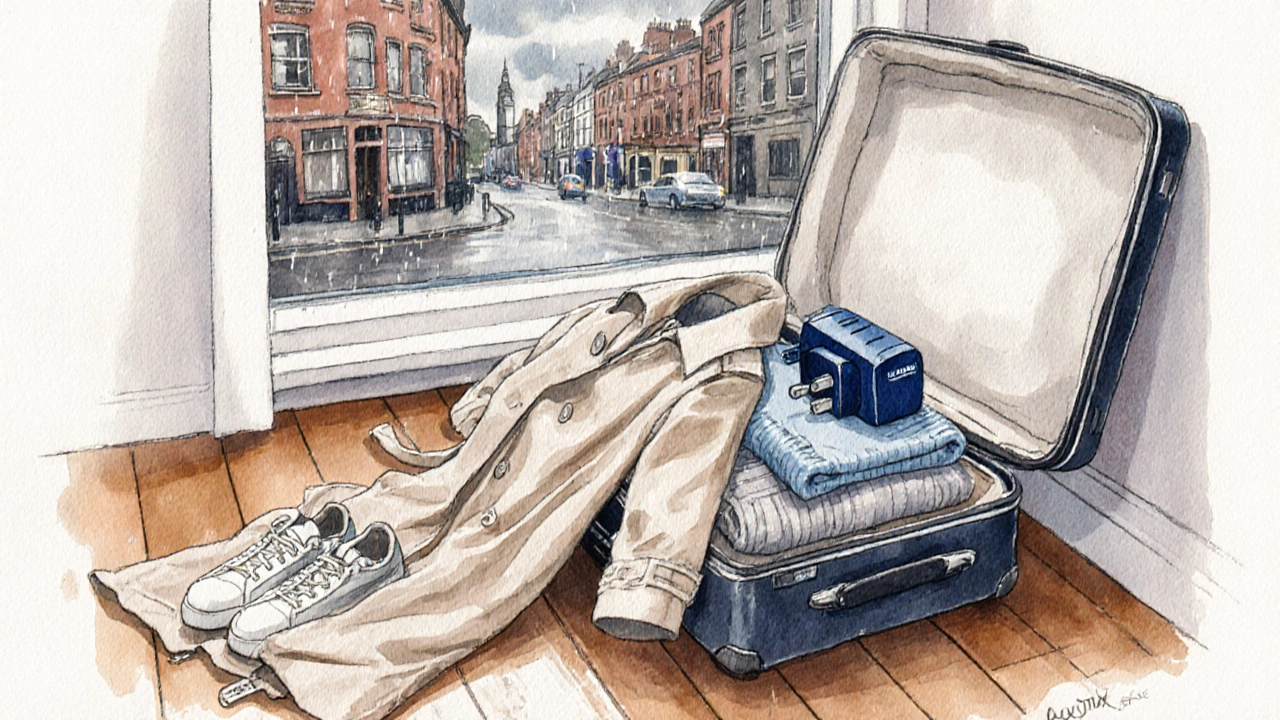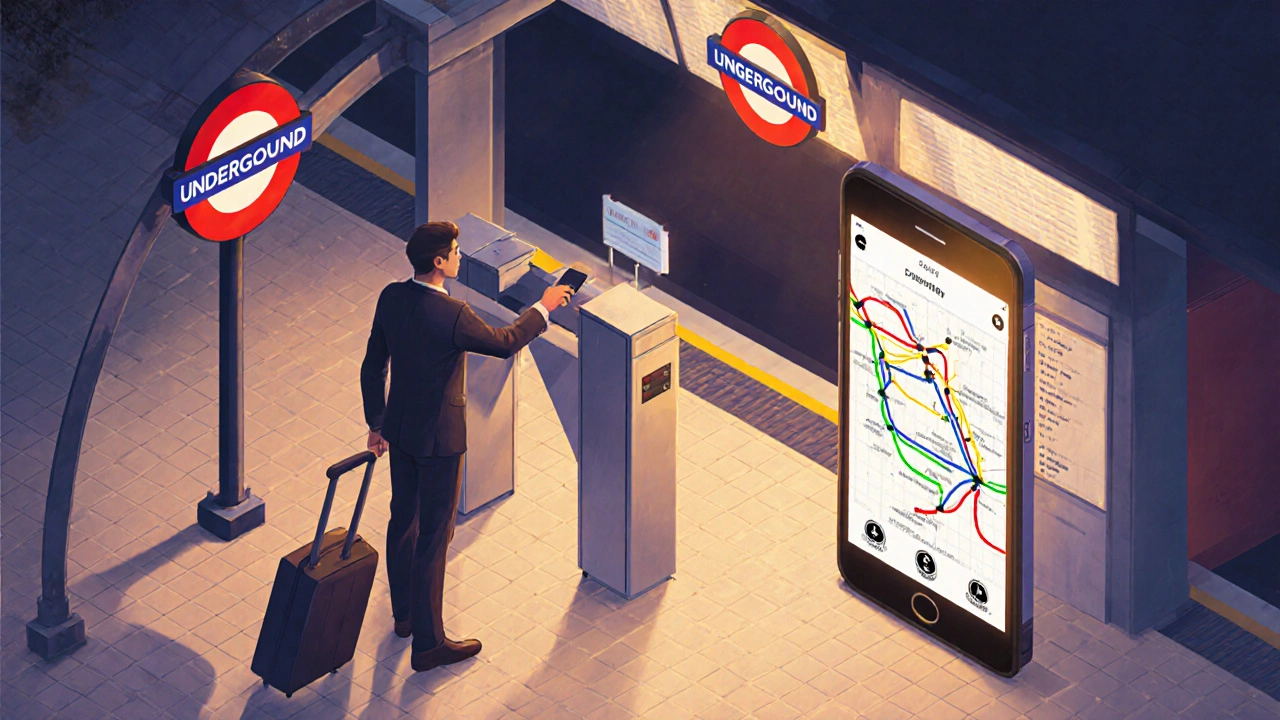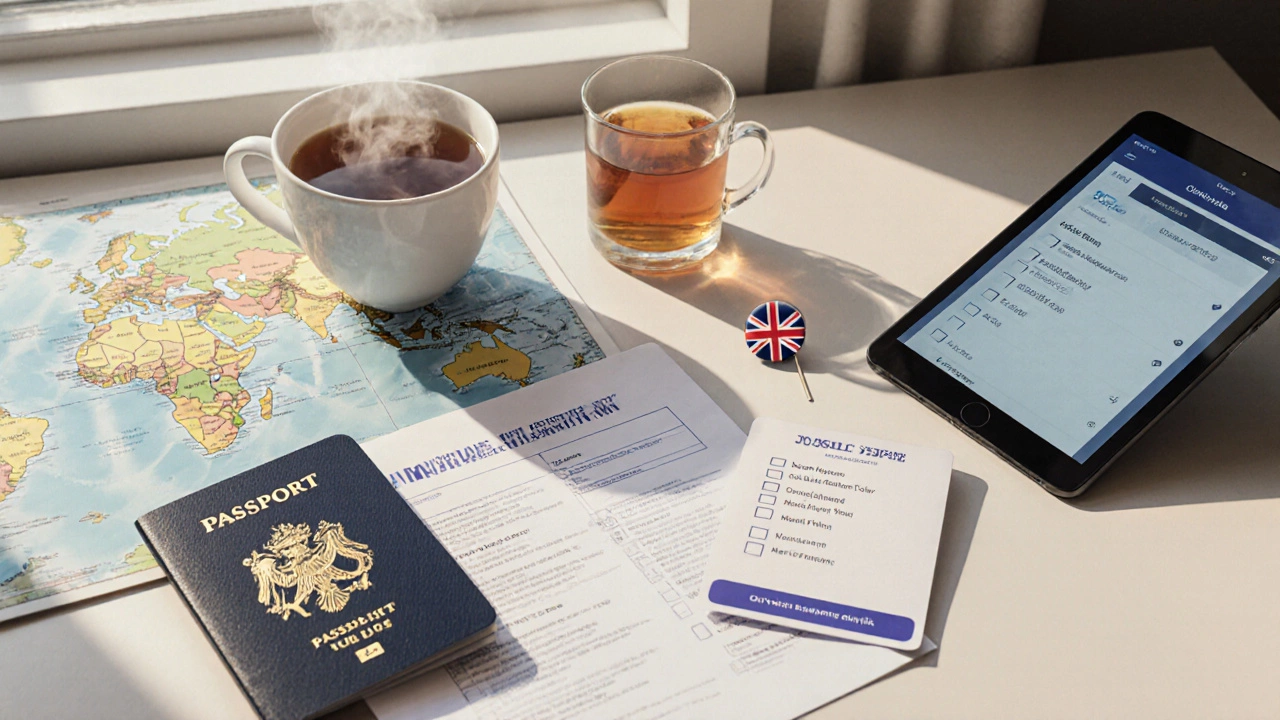UK Visa Checker
Determine if you need a visa to enter the United Kingdom based on your nationality and travel purpose. This tool helps you quickly understand UK entry requirements before you book your trip.
Check Your Visa Requirements
Planning a trip to the United Kingdom can feel overwhelming, but with the right prep you’ll glide through airports, streets, and pubs without a hitch. Below you’ll find everything you need-from visas and money to packing hacks and must‑have apps-so you can focus on enjoying the sights instead of worrying about the details.
Quick Summary / Key Takeaways
- Check if you need a UK visa at least three months before departure.
- Make sure your passport is valid for at least six months beyond your travel dates.
- Buy travel insurance that covers medical emergencies and cancellations.
- Carry both a contactless debit/credit card and a small amount of British pounds.
- Pack layers: a waterproof jacket, smart‑casual outfits, and comfortable shoes.
Understanding Entry Requirements
First things first: can you walk straight through UK border control? The answer hinges on your nationality and the purpose of your visit.
Standard Visitor Visa is the most common visa for tourists, family visits, or short business trips. It lets you stay up to six months and doesn’t allow work or long‑term study. If you’re an Australian, Canadian, or EU citizen, you typically won’t need a visa for stays under six months, but you still must meet the basic entry criteria.
For visa‑free travelers, the UK expects:
- A passport valid for at least six months after your intended departure.
- Proof of onward travel (e.g., a return flight).
- Evidence of sufficient funds (about £95 per day is a good benchmark).
Getting Your Documents in Order
Missing paperwork is the number‑one cause of denied boarding. Here’s a checklist you can print:
- Passport - make sure the expiration date is far enough out.
- Visa (if required) - apply online via the official UK government portal.
- Travel insurance - choose a policy that covers at least £30,000 for medical costs and includes trip cancellation.
- Vaccination record - while the UK doesn’t require mandatory shots, proof of COVID‑19 vaccination may be asked for in certain venues.
- International driving licence - useful if you plan to rent a car; remember the UK drives on the left.
Store digital copies on a secure cloud service, and keep printed versions in a waterproof pouch.

Money Matters
The UK uses the British pound sterling (£). While many places accept card payments, some smaller towns, markets, and countryside pubs still prefer cash.
Pound Sterling is a stable currency, and most Australian cards work without hefty foreign‑transaction fees. Before you leave:
- Notify your bank of travel dates to avoid blocked cards.
- Enable contactless payments - they’re faster on buses and the Tube.
- Exchange a small amount (≈£50) at a reputable bank or airport kiosk for immediate cash.
Consider a travel‑card like the Revolut or Wise “borderless” account for best exchange rates and instant currency conversion.
Packing Smart for UK Weather
British weather is famously unpredictable. Even in summer, rain showers can appear out of nowhere.
Pack the following core items:
- Water‑proof jacket or trench coat.
- Layered tops - a mix of t‑shirts, long‑sleeve shirts, and a light sweater.
- Comfortable, breathable shoes (sneakers work well).
- Smart‑casual outfit for evening dining (no shorts required).
- Universal plug adapter (UK uses type G sockets, 230V).
A compact travel umbrella (≤15cm when folded) can be a lifesaver on rainy days.
Health and Safety
The UK’s National Health Service (NHS) provides free emergency care for residents, but visitors must have proper insurance for non‑emergency treatment.
National Health Service will treat you in an emergency, but you’ll be billed for any follow‑up care unless your travel insurance covers it. Keep your insurance card handy and note the nearest NHS walk‑in centre wherever you stay.
For common ailments:
- Pharmacies (green cross signs) can dispense over‑the‑counter meds without a prescription.
- Dial 999 for ambulance or fire emergencies.

Getting Around
The UK boasts a dense network of trains, buses, and the iconic London Underground. Here’s how to navigate efficiently:
Transport for London (TfL) runs the Tube, buses, and overground services across Greater London. The easiest way to pay is with an Oyster card or contactless bank card-just tap in and out.
For inter‑city travel, book tickets on the National Rail website or through the Trainline app. Advance bookings can save up to 50% compared to buying on the day.
Key tips:
- Buy an Oyster card (£5 refundable) if you’ll stay in London for more than three days.
- Download the Citymapper app for real‑time directions across all UK cities.
- Consider a rail pass (e.g., BritRail) if you plan to visit multiple regions.
Apps & Resources You’ll Love
| App | Primary Use | Free/Paid |
|---|---|---|
| Citymapper | Public‑transport routes and live updates | Free |
| National Rail Enquiries | Train times, tickets, disruptions | Free |
| BBC Weather | Accurate regional forecasts | Free |
| TripIt | Itinerary organizer | Free/Paid |
Ultimate UK Travel Checklist
- Verify passport expiry (6‑month rule).
- Determine visa requirement; apply if needed (apply 3months ahead).
- Purchase comprehensive travel insurance (medical + cancellation).
- Exchange a small amount of pounds and set up a travel‑card.
- Book flights and accommodations; keep confirmations handy.
- Download essential apps (Citymapper, NHS, etc.).
- Pack waterproof outerwear, plug adapter, and comfortable shoes.
- Print or save a copy of your itinerary, insurance policy, and emergency contacts.
- Notify bank of travel dates.
- Check any COVID‑19 or health advisories 48hours before departure.
Frequently Asked Questions
Do I need a visa to visit the UK as an Australian?
No. Australian citizens can enter the UK visa‑free for tourist stays up to six months, provided they meet the standard entry criteria (valid passport, proof of funds, onward travel).
What is the best way to exchange money once I arrive?
Use a reputable bank or an ATM that belongs to a major UK bank (Barclays, HSBC, NatWest). Avoid airport currency kiosks unless you need a small amount for immediate expenses.
Is travel insurance really necessary for the UK?
Absolutely. While the NHS will treat emergencies, you’ll be billed for non‑emergency care. A good policy also covers trip cancellations, lost luggage, and personal liability.
Can I use my Australian credit card everywhere?
Most major retailers and restaurants accept Visa and Mastercard. Contactless payment works seamlessly on public transport. It’s still wise to carry a small amount of cash for markets or small pubs.
What should I wear for a typical day in London?
Layered clothing is key: a t‑shirt or light sweater, a waterproof jacket, and comfortable shoes. Add a smart‑casual jacket if you plan to dine out in the evening.





